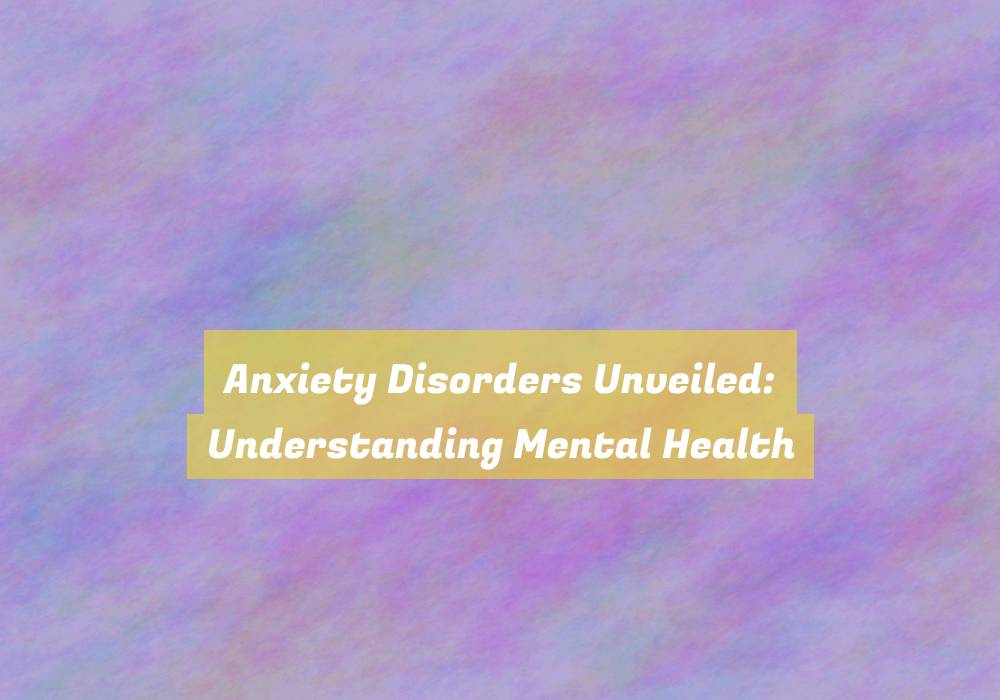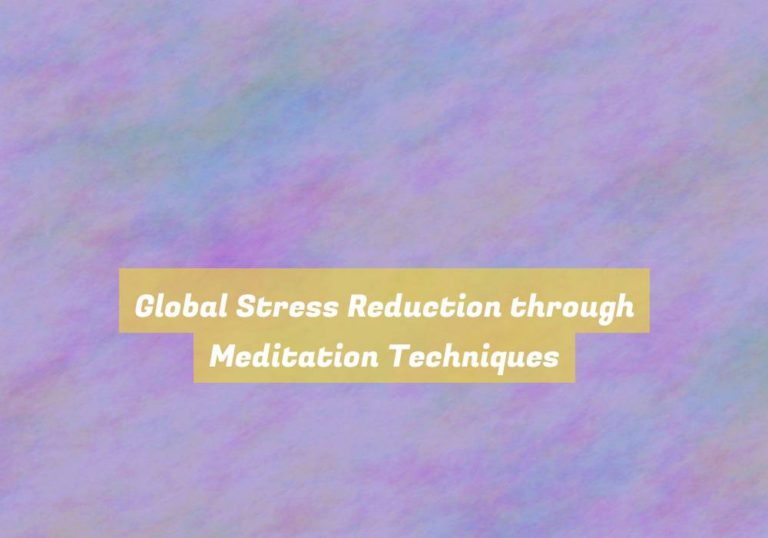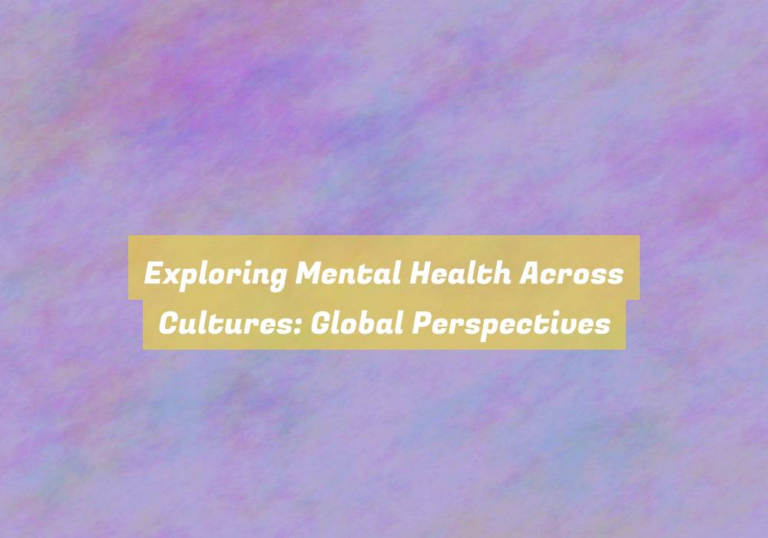Anxiety Disorders Unveiled: Understanding Mental Health
Have you ever wondered why anxiety disorders seem to be on the rise in modern society?
The truth is, understanding mental health and the complexities of anxiety disorders is a crucial step in addressing the challenges many individuals face on a daily basis.
From the different types of anxiety disorders to the signs and symptoms that may often go unnoticed, gaining a deeper understanding of this topic can shed light on the importance of mental health awareness.
But what are the underlying causes of anxiety disorders, and what treatment options are available?
These are questions worth exploring as we navigate the landscape of mental health.
Types of Anxiety Disorders
When you experience intense, excessive, and persistent worry and fear about everyday situations, you may be dealing with a specific type of anxiety disorder. Generalized Anxiety Disorder (GAD) is characterized by uncontrollable and irrational worry about everyday things. It can cause significant distress and impairment in various areas of your life.
Panic Disorder is another type of anxiety disorder, where you experience sudden and repeated attacks of intense fear. These panic attacks may lead to physical symptoms like a racing heart, sweating, and difficulty breathing.
Social Anxiety Disorder involves overwhelming worry and self-consciousness about everyday social situations. It can be limited to specific situations or generalized to almost all social interactions.
Phobias are also common types of anxiety disorders. These involve intense fear of specific objects or situations, such as heights, flying, or animals.
Finally, Obsessive-Compulsive Disorder (OCD) is characterized by recurrent, unwanted thoughts and repetitive behaviors. These can significantly interfere with your daily activities and relationships.
Understanding the different types of anxiety disorders is crucial for seeking appropriate support and treatment.
Signs and Symptoms
You may notice several signs and symptoms that indicate the presence of an anxiety disorder.
Physical symptoms such as increased heart rate, rapid breathing, sweating, and trembling are common indicators. You might also experience gastrointestinal issues, such as stomach aches or nausea. Furthermore, persistent muscle tension and headaches can be physical manifestations of anxiety.
On a psychological level, you might find yourself constantly feeling on edge, irritable, or having difficulty concentrating. Additionally, persistent feelings of worry or fear that interfere with your daily life could be a sign of an anxiety disorder. Sleep disturbances, such as difficulty falling asleep or staying asleep, are also common symptoms.
Avoidance behaviors, like steering clear of certain places or situations that trigger anxiety, can also be an indication of an underlying anxiety disorder.
ItG??s important to recognize that these signs and symptoms can vary from person to person, and itG??s always best to seek professional help if you suspect that you or someone you know may be struggling with an anxiety disorder.
Understanding Causes
Having identified the signs and symptoms of anxiety disorders, itG??s essential to understand the underlying causes that contribute to the development of these mental health conditions. One of the primary causes of anxiety disorders is genetics. Research suggests that individuals with a family history of anxiety disorders are more likely to develop these conditions themselves.
Additionally, traumatic life experiences such as abuse, violence, or the sudden loss of a loved one can trigger anxiety disorders. Chronic stress, whether stemming from work, relationships, or financial concerns, also plays a significant role in the development of anxiety disorders.
Furthermore, brain chemistry and structure can influence the onset of anxiety disorders. Imbalances in neurotransmitters, such as serotonin and dopamine, have been linked to the development of these conditions. Additionally, certain parts of the brain, including the amygdala and the prefrontal cortex, are involved in the regulation of fear and anxiety responses. These areas may function differently in individuals with anxiety disorders.
Substance abuse, particularly of drugs and alcohol, can exacerbate or even trigger anxiety disorders. Understanding these causes is crucial in developing effective strategies for managing and treating anxiety disorders.
Treatment Options
Treatment options for anxiety disorders range from therapy and medication to lifestyle changes and self-care practices for managing symptoms effectively.
Therapy, such as cognitive-behavioral therapy (CBT), can help you identify and change negative thought patterns and behaviors that contribute to your anxiety. It equips you with coping mechanisms to navigate anxious feelings and situations.
Medication, such as selective serotonin reuptake inhibitors (SSRIs) or benzodiazepines, can also be prescribed by a mental health professional to alleviate symptoms. ItG??s important to consult a healthcare provider to determine the most suitable medication for your specific needs.
In addition to therapy and medication, lifestyle changes like regular exercise, adequate sleep, and a balanced diet can positively impact your mental well-being. Engaging in relaxation techniques, such as mindfulness meditation and deep breathing exercises, can also help reduce anxiety.
Self-care practices like setting boundaries, prioritizing self-care, and maintaining social connections are essential for managing anxiety.
Conclusion
Now that you have a better understanding of anxiety disorders, itG??s important to remember that seeking help is the first step towards managing your mental health.
With the right treatment and support, itG??s possible to overcome the challenges that come with anxiety disorders.
Remember, you arenG??t alone and there are resources available to help you on your journey to mental wellness.
DonG??t hesitate to reach out for support when you need it.








Your exploration of anxiety disorders really resonates with me, especially considering how the fast-paced nature of modern life can exacerbate feelings of worry and fear. I’ve noticed in my own experience that societal pressures—like the constant comparison fueled by social media—can really intensify anxiety. It’s interesting to think about how technology plays a dual role; while it can increase our stress, it’s also a valuable resource for seeking help and finding community support.